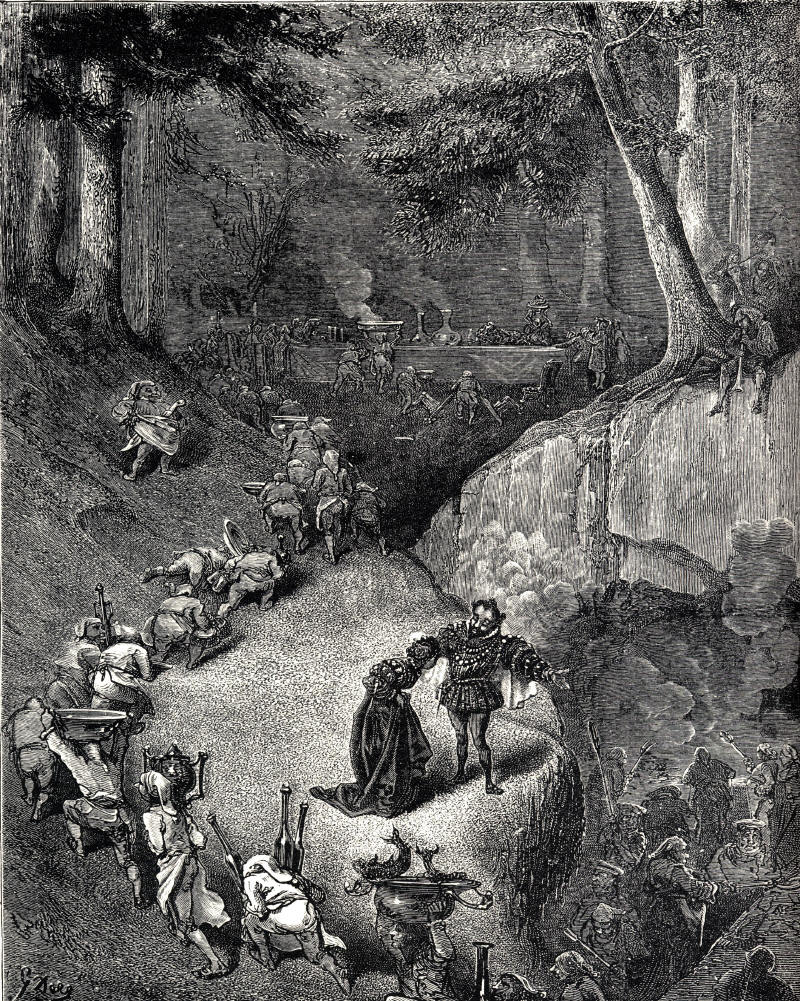Riquet with the Tuft on:
[Wikipedia]
[Google]
[Amazon]
 "Riquet with the Tuft" (french: Riquet à la Houppe), also known as "Ricky of the Tuft", is a French literary fairy tale first published by
"Riquet with the Tuft" (french: Riquet à la Houppe), also known as "Ricky of the Tuft", is a French literary fairy tale first published by
Catherine Bernard
Katherine, also spelled Catherine, and other variations are feminine names. They are popular in Christian countries because of their derivation from the name of one of the first Christian saints, Catherine of Alexandria.
In the early Chris ...
in 1696. The more famous version is that of Charles Perrault in his ''Histoires ou contes du temps passé
''Histoires ou contes du temps passé, avec des moralités'' or ''Contes de ma mère l'Oye'' (''Stories or Tales from Past Times, with Morals'' or ''Mother Goose Tales'')Zipes (2000), 236 ff. is a collection of literary fairy tales written by C ...
'' in 1697.
Name
Three possible explanations of the name Riquet exist:''Charles Perrault, Contes'' (introduction, notices et notes de Catherine Magnien), Éditions Le Livre de Poche Classique * Perrault mischievously refers to the Riquetti family, whose name was Frenchified as Riquet.Pierre-Paul Riquet
Stele in Toulouse Cathedral
Pierre-Paul Riquet, Baron de Bonrepos (29 June 1609 (some sources say 1604) – 4 October 1680) was the engineer and canal-builder responsible for the construction of the Canal du Midi.
Background
Paul Riquet was b ...
, protege of Jean-Baptiste Colbert, was the promoter of the Royal Canal in Languedoc.
* Catherine Bernard
Katherine, also spelled Catherine, and other variations are feminine names. They are popular in Christian countries because of their derivation from the name of one of the first Christian saints, Catherine of Alexandria.
In the early Chris ...
, author of an earlier version which inspired Perrault, was from Normandy. Émile Littré
Émile Maximilien Paul Littré (; 1 February 18012 June 1881) was a French lexicographer, freemason and philosopher, best known for his '' Dictionnaire de la langue française'', commonly called .
Biography
Littré was born in Paris. His fathe ...
, in his article “Riquet à la Houppe”, specifies: “Etymology: it is said that in Norman, riquet means counterfeit, hunchback”.
* This nickname can also be interpreted as the diminutive of Henriquet, little Henri.
Plot
In the version by Charles Perrault, a fairy gives an ugly prince named Ricky the gift of conferring wit upon the one he loves the best. Prince Ricky of the Tuft comes to a kingdom with two princesses. The elder one is beautiful but unintelligent and the younger one is intelligent but ugly. The elder princess is saddened that her ugly but smart sister receives more attention than her. One day as the elder princess was going for a walk in the forest to ease her sorrow, she is approached by Ricky who had fallen in love with her after seeing portraits of her that circulated. Ricky asks how a person so beautiful as she can be so sad, to which she responds that she is sad because she is beautiful but lacks intelligence. Ricky then bestows the gift of intelligence on the elder princess for a promise of marriage. A year later, Ricky comes to marry her. She refuses on grounds that he cannot hold her to a promise made before she gained her wisdom. The princess then tells him that she was gifted at birth with the power to transform her lover into a beautiful person by the same fairy who helped him. The princess thinks of all the Prince's good qualities and at once the prince is transformed. The king has his daughter married to the prince who has already made preparations for the wedding.References
External links
* * 1697 short stories French fairy tales French literature Works by Charles Perrault Norman folklore {{Authority control